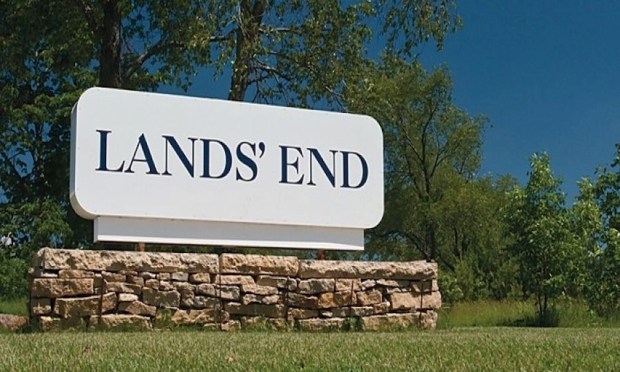Lands’ End’s New Beginning On Amazon

When Lands’ End announced Circle Membership last spring, it was clearly with high hopes. The launch came as part of the fanfare for Canvas by Lands’ End — a relaunch of its cooler, hipper, more millennial-focused brand. Circle offers customers a chance to pay $50 in return for unlimited free shipping and free returns on all Canvas by Lands’ End purchases, as well as 20 percent off all full-price buys and other assorted discounts and coupons. It was, in short, Lands’ End’s answer to Amazon Prime.
And that initial good cheer was matched with some positive indicators out of the box. While Canvas by Lands’ End was far from a runaway fashion sensation, it did develop a respectable enough following among fashion bloggers that it looked like it might at least make the cut as something of a sleeper success.
“In May and June combined, we realized a significant improvement in trend in our customer metrics, with a slight increase in active buyers and double-digit increase in reactivating lapsed buyers,” noted Lands’ End Chief Operating and Financial Officer James Gooch in a recent call with investors.
Good news, but short-lived as it turned out. May and June’s slight overperformance was overshadowed by a disappointing July.
All relevant metrics were down for the second quarter of the year. Direct sales, which combined the firm’s online and catalog orders, fell by almost 7 percent in fiscal Q2 ended July 29 to $246.4 million from $264.7 million in the same quarter a year ago. That brings the declines in direct sales over the first half of the year to 7.6 percent, with forecasts for additional declines.
“We recognize that we still have a lot of work to do,” Gooch noted.
Indeed.
What that work will look like will take many forms, including an upgraded eCommerce presence, greater emphasis on institutional partnerships (uniforms) and continued support for the relaunch of its Canvas by Lands’ End brand.
But the most attention-getting part of Lands’ End’s great rehabilitation plan is the part about the Amazon expansion and the brand’s choice to start selling some of its lines on Amazon.
“This provides an additional channel for us to introduce consumers to our new brand and expanded category,” CEO Federica Marchionni noted of the digital expansion.
And, critics have noted, an opportunity to introduce Amazon to its consumer data and a chance to use that data to enhance the fortunes of its own emerging retail line.
So, why take the risk?
Because sharing customers with Amazon is better than losing customers across the board.
The Shape Of The Partnership
Image has long been an issue of the outdoorsy clothesmaker and the view of it as sort of a down-market version of L.L.Bean (which, in itself, has become a down-market version of The North Face).
But Lands’ End has been working to refresh that image of late and instead trying to position itself as the brand for the fashion-forward outdoors person — clothing for the glampers of the world.
Those changes include slimmer fitting clothes, a new line of athletic wear and even the off pair of high heels (not so outdoorsy). That is good news for fashion bloggers who are giving Lands’ End props — not so good news for Lands’ End’s core base of catalog shoppers looking for a good deal on a flannel shirt.
Building out to meet its expanding base of the more fashion-conscious, however, has been a challenge given that Lands’ End does not have a massive physical footprint to leverage. It only operates 277 shops housed within Sears locations. This is arguably a questionable strategy given Sears’ struggles, and expanding its physical footprint these days is not exactly a surefire recipe for exposure.
Amazon, on the other hand, is, in many ways, a top-notch mall for the properly placed, and that does offer a benefit for Lands’ End, particularly as it tries to up its conversion. It is also far cheaper than physical expansion and lower risk.
Or is it?
The Fox In The Hen House Problem
The difference between opening in a mall and opening on Amazon is that the mall itself may be full of your competitors but at least the mall operator isn’t. This is not quite the case with Amazon, and it has led to issues with brands operating on the marketplace.
Birkenstock pulled its merchandise on Amazon in a fairly high-profile fashion on complaints that Amazon sells and supports a high level of counterfeits and knockoffs.
But Amazon of late has become a more serious mover in fashion and more eager to shed its reputation as a home to downscale knockoffs. And it wants brands to come and play ball with it. To make that more palatable, Amazon has promised to hold the line on discounting. Lands’ End reports that Amazon has agreed to respect its pricing structure, and to further protect its brand, it isn’t opening the whole shop up to the Amazon audience.
“As Amazon’s credibility of being a desired fashion destination for shoppers continues to grow, Lands’ End sees the potential to accelerate our newest initiatives by leveraging that trend,” Marchionni wrote in an email.
Will selling on Amazon be worth the risk?
Time will answer that question better than we can, but it is worth at least noting that Lands’ End may not have any other options — catalogs are a dying business. A move digital is underway, but finding a digital audience out of a paper one is not exactly the more direct path. Whether it works with Amazon remains to be seen, but it is clear that getting its brand in front of consumers is at least priority one.
Which, as first steps go, isn’t a bad one.
